Resident Evil Village
Resident Evil Village isn’t what you think it will be. Expert redirection from Capcom means that even if you’ve played the demos, watched the trailers and vacuumed up every snippet of information you can, you’ve only just scratched the surface of what Village is actually about - and that’s a very good thing.
Resident Evil Village is a worthy successor to the critically acclaimed Resident Evil 7 - but while that game may have arguably saved the survival horror series, Village builds on it with an experience that draws from all the best moments of the series. Capcom has finally found the formula that promises to thrill veteran fans of Resident Evil, while taking some much-needed risks in the process.
While action played second fiddle to survival horror exploration in Resident Evil 7, Village balances the books somewhat. Resident Evil Village is more action-focused than its predecessor - making it closer to Resident Evil 4 in its moment-to-moment gameplay - but it blends this with the survival horror elements that we love about older entries. Combine this with some quality-of-life improvements, an array of memorable characters, a well-paced and gripping story and superb utilization of audio, and Resident Evil Village is another series highlight.
However, while this should be the perfect mix - and often it is - Resident Evil Village is let down at times by its lack of shudder-inducing horror and generally anticlimactic boss fights, with some key story beats feeling like they’ve been shoehorned in at the end rather than gradually teased out through the game. While these issues become more prevalent as the game progresses, and frustratingly make what is perhaps the best entry in the series’ modern history a bit clumsy in places, Resident Evil Village is not to be missed. And that's true whether you’re a veteran or a brand new Resi fan.
Spoilers for Resident Evil 7 ahead.
- Resident Evil games ranked: which is the best mainline Resi game?
Resident Evil Village price and release date
- What is it? The eighth mainline entry in the Resident Evil series
- Release Date? May 7, 2021
- What can I play it on? PS4, PS5, Xbox One, Xbox Series X/S, Stadia and PC
- Price? Standard edition is £54.99 / $59.99 / AU$99.95
Mr Winters
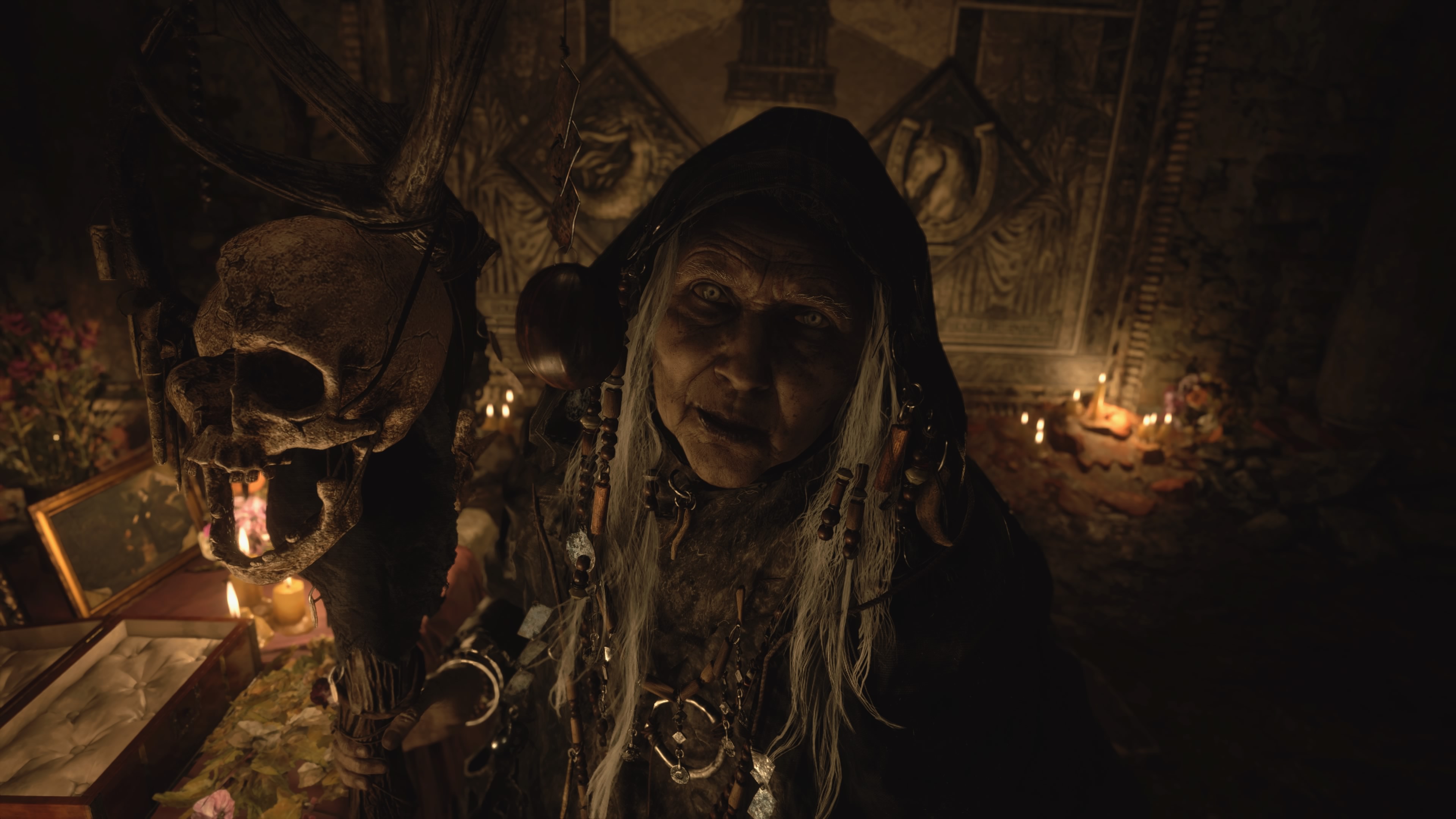
- A well-paced story that doesn’t outstay its welcome
- Memorable characters
- Some rushed story beats near the end
Resident Evil Village follows on from the events of Resident Evil 7 - taking place a few years later. Fortunately, if you haven’t played Resident Evil 7 (or forget what happened) Resident Evil Village gives you a rundown of what occurred in its predecessor.
After defeating Eveline and being saved from the Baker home bloodbath by Chris Redfield and Bioterrorism Security Assessment Alliance (BSAA), Ethan and his wife Mia have moved to Eastern Europe where the BSAA has promised to protect the couple and their newborn baby, Rose. But following an incident at their new home, Rose is kidnapped and Ethan finds himself in a devout village in the middle of nowhere, desperate to find Rose.
Resident Evil Village is a masterclass in how marketing misdirection can keep the element of surprise in an era plagued with leaks and spoilers. Based on the trailers and demos of Resident Evil Village, we went into the latest Resi entry with a very different idea of what it would be about. So it was a welcome surprise to find that these marketing materials barely scratched the surface of what Village tries to do - the unpredictability adding a degree of suspense and unease to both the narrative and the gameplay. We never quite knew what to expect next.
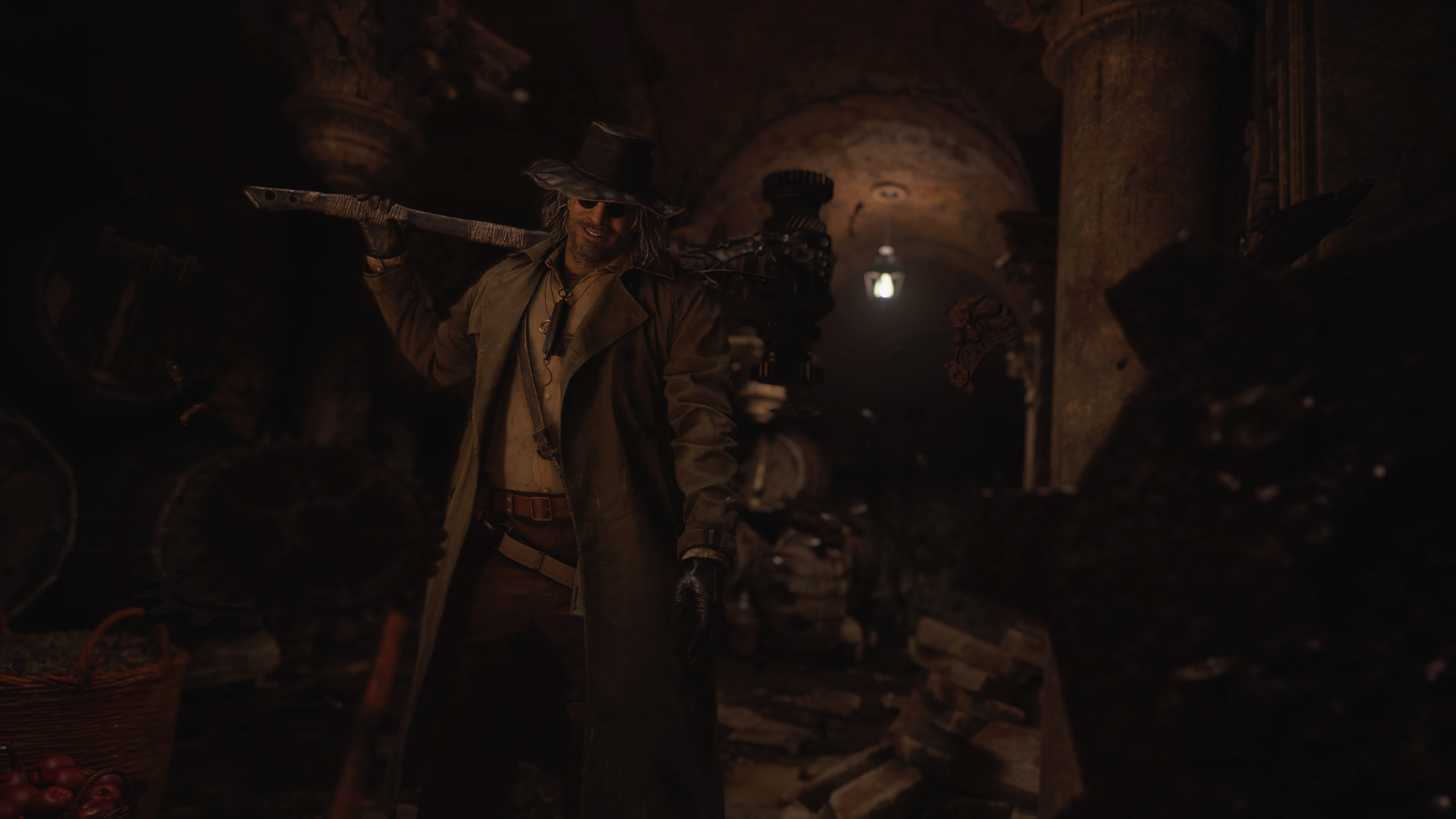
It helps, then, that Village is (mostly) well-paced, giving you the time to absorb its environments and characters, as well as the opportunity to explore every nook and cranny you can - in true Resi fashion. At the same time, the game fires a new set-piece at you a couple of times every hour, just to keep the excitement going.
These are environments that you’ll want to explore, too, all beautifully realized and folklore-inspired, with each location offering a different sense of dread - whether that’s the open-plan nature of the snowclad village where something could attack from any angle, or the claustrophobia that comes from the narrow hallways of a factory.
Without spoiling what’s to come, each of these environments varies quite a bit, with the Village itself (a central hub for all locations) changing over time too. It helps to keep gameplay fresh, especially given that the design of Resident Evil games often sees you retreading old steps. We found that each location seemed to hark back to a specific entry in the Resident Evil series, with the castle reminiscent of the original Resident Evil's mansion in layout – the village, meanwhile, recalls the opening location of the fourth entry. Village feels like both a tribute and a step forward for the series.
Village is brought to life by some of the most memorable characters we’ve seen in the series to date. While all eyes have been on castle matriarch Lady Dimitrescu, she’s only one of several key characters in Village that Ethan will have the misfortune of encountering. Some of the Village’s most unsavory characters include a reservoir-dwelling mutant, a terrifying puppet bride and a metal-wielding rebel. Each of these characters allows Capcom to tap into different types of horror, with the environments they reside in reflecting this, proving that Resident Evil can be more than a one-trick pony when it comes to unnerving us.
Resident Evil Village’s story is probably its biggest boon, seamlessly following on from Resident Evil 7 while simultaneously turning everything you thought you knew on its head. While you could theoretically zoom through the story in three hours, it’s not recommended for the first playthrough as you’ll want to inhale every piece of lore you can to get a true sense of the threads that tie the narrative together. Capcom has done a brilliant job of blending the overarching Resident Evil lore with Ethan’s story, and hinting at what we can expect next.
Still, while Village is well-paced in its first half, the second felt a bit rushed. Some of the big moments in this story could've used a little room to breathe - even if, overall, the game delivers a satisfying arc for Ethan.
Fear of the dark
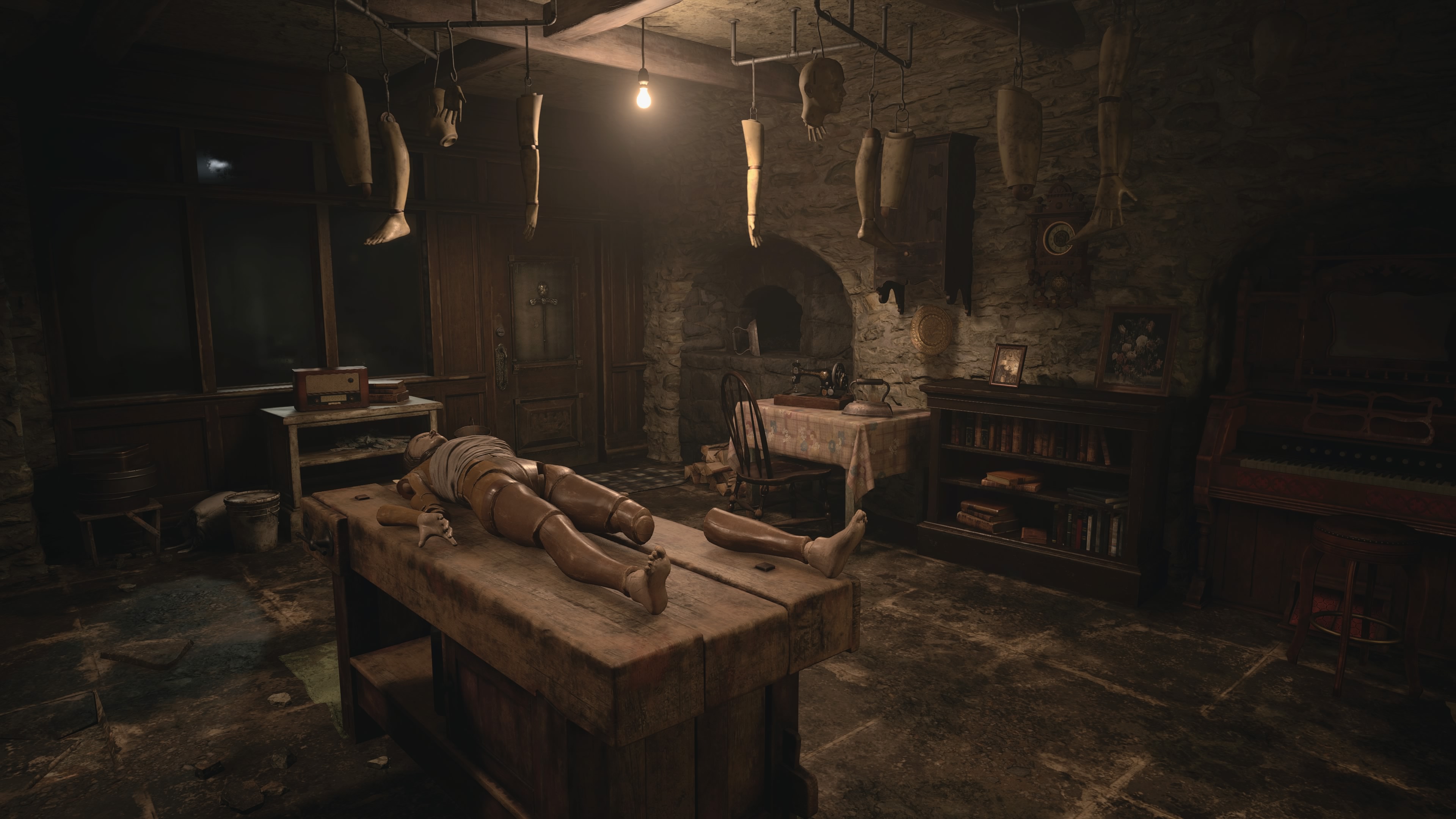
- Less focus on scares
- Hunting is useful but feels out of place
- The Duke is a lifesaver
Resident Evil Village takes a somewhat different approach to horror than we have seen with many of its predecessors. Rather than looking to out-and-out spook you with jump scares and ambiance, Village seems to lean more into classic horror - for better or worse - with the fear lying not in what you can’t see but in the (sometimes) living, breathing creature trying to maul you.
We found that we missed the scary ambiance that we loved in the likes of Resident Evil and Resident Evil 2, with Village’s Lycans (or werewolves) proving more of an exercise in combat skills than nerve.
One of Village’s greatest sequences has no combat at all. Instead, it relies on sheer fear of the unknown and ambiance alone, with Ethan aiming to solve puzzles - unarmed - in a darkened house with constant creeks and unidentifiable noises. You’re powerless, with no choice but to push ahead - knowing something could lurk around the next corner.
We wish there were more sequences like this (even just one more), as it’s easily the most unnerving part of the game. In comparison, the rest of Resident Evil Village doesn’t do a whole lot to scare you. While the balance of action to story has been executed perfectly, the shudder-inducing horror we’ve come to expect from Resident Evil has been muted a bit.
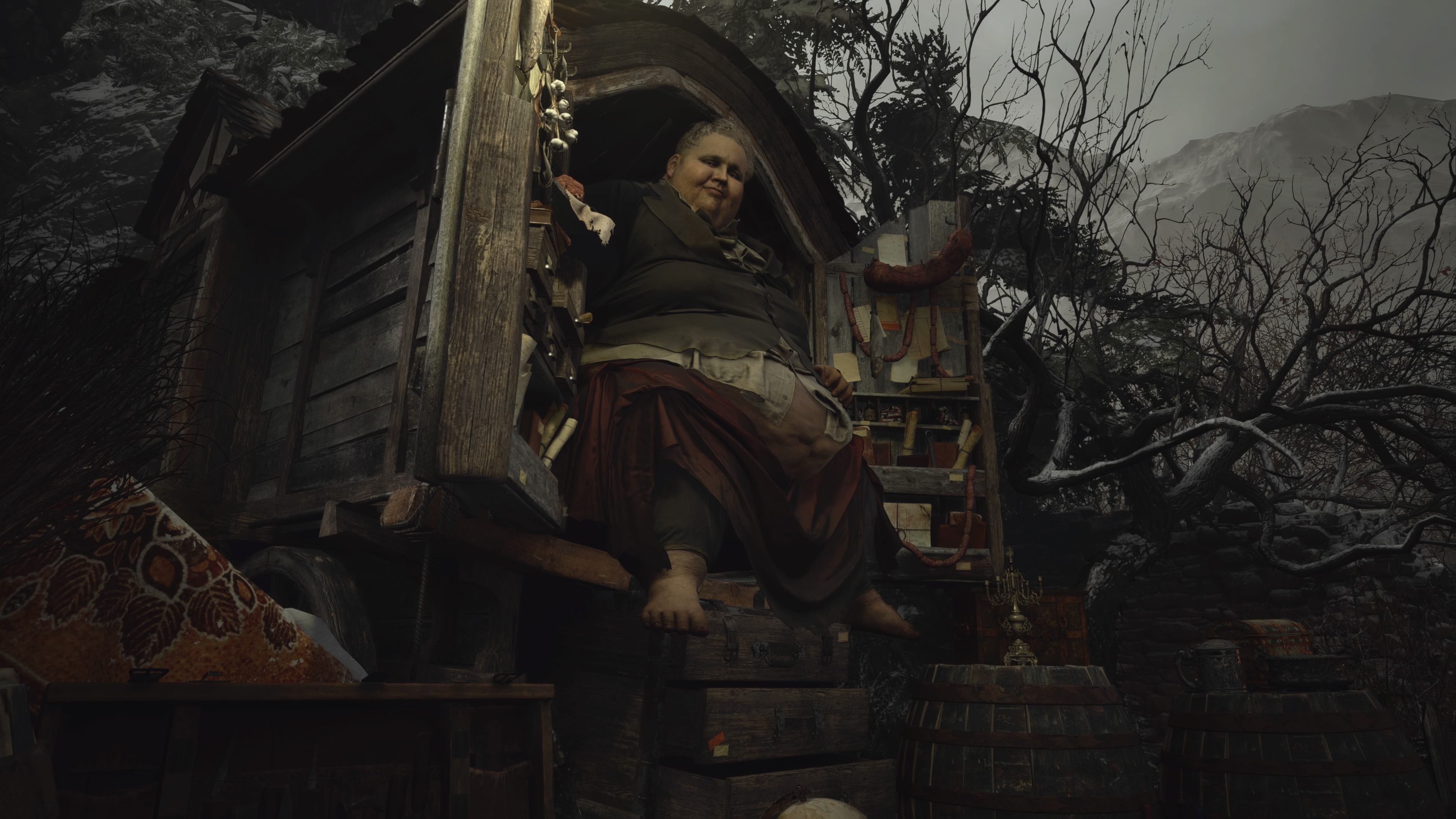
Another aspect that feels a bit more diluted in Village is puzzle-solving. While there are treasures for Ethan to find - and in some cases combine - there aren’t too many sequences that see you having to find specific items for progression. Well, not many that require you to look hard for these items, anyway. Village mostly makes your route to these items pretty linear. This makes progression feel a bit too straightforward at times, when a more challenging puzzle or two could go a long way.
The new Hunting system does make up for this somewhat, encouraging you to search the Village and its surrounding areas for animals - and their rarer variants - that can provide Ethan with poultry, meat and fish. These can be handed into a menu screen known as Duke’s Kitchen for permanent upgrades. While we made an effort to try to find the animals, it is a feature that - at times - felt slightly bolted on and out of place. One second you’re fighting a Lycan, and the next you’re trying to shoot fish in a pond. That said, the permanent upgrades are extremely useful.
The Kitchen is just one of the services that Resident Evil Village’s Duke - the game's charismatic merchant - offers. While we aren’t fans of the fat-shaming trope, that sees this overweight proprietor greedy for both your food and money, the Duke is a lifesaver and a clear successor to Resident Evil 4’s merchant - he even makes references to his predecessor. The Duke allows you to buy a range of items, including ammo, bombs and new weapons, as well as weapon and inventory upgrades in return for an in-game currency called Lei. This can be found on dead enemies or gained by selling the treasures you find the Duke, which is again very Resident Evil 4-like.
The inclusion of the Duke does away with the pesky problem we’ve had in many Resident Evil titles, where you run out of ammo and end up stuck. It takes down an unnecessary barrier. Still, it’s worth noting the Duke’s stock of the essentials isn’t limitless - which is a good thing, as it means you need to be more deliberate when you choose to buy extra supplies.
Lycans and witches and zombies, oh my!
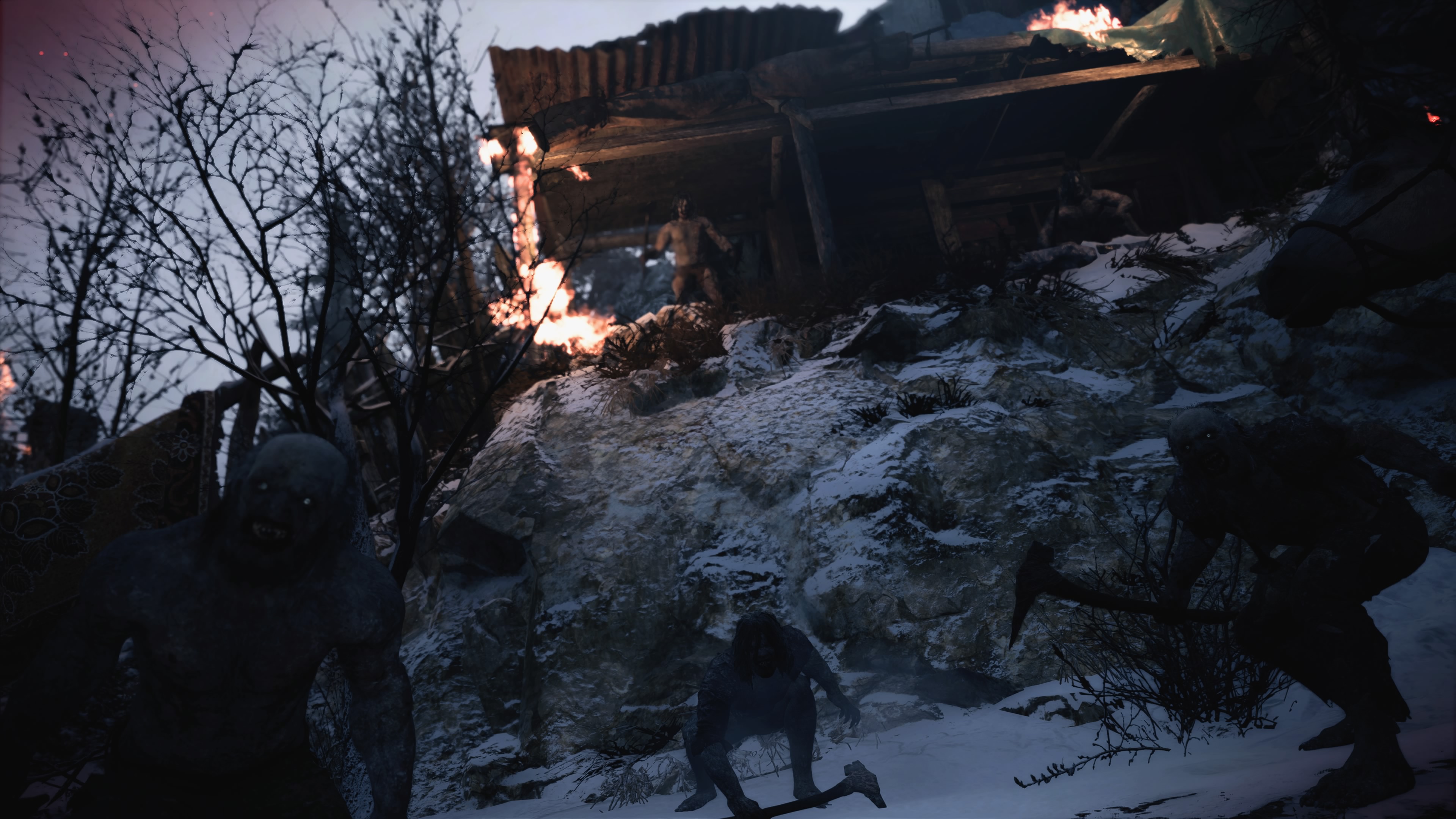
One of the biggest changes Resident Evil Village brings is the variety of adversaries players have to fight in the game. In addition to a variety of Lycans, Ethan will also encounter crow-like creatures, vampires, experiments gone wrong and - of course - zombies. The variety of enemies is a big upgrade on Resident Evil 7 - it gives the game a distinctly old school horror vibe, and it's a shake-up that we’re very happy to see.
We played on Standard and never felt overwhelmed by Resident Evil Village’s enemies, but there are varying difficulty options for those who want more of a challenge. The gunplay and combat is fairly similar to Resident Evil 7. There’s not a whole lot of nuance for most enemy fights: simply hit the target (ideally in the head) and use guard when they get too close.
We did find that the game's bosses and (in particular) the mini-bosses required a bit more strategy - though often we found the boss fights to be anticlimactic, with the build-up suggesting a major battle was about to ensue, and the reality being that it’s over within minutes.
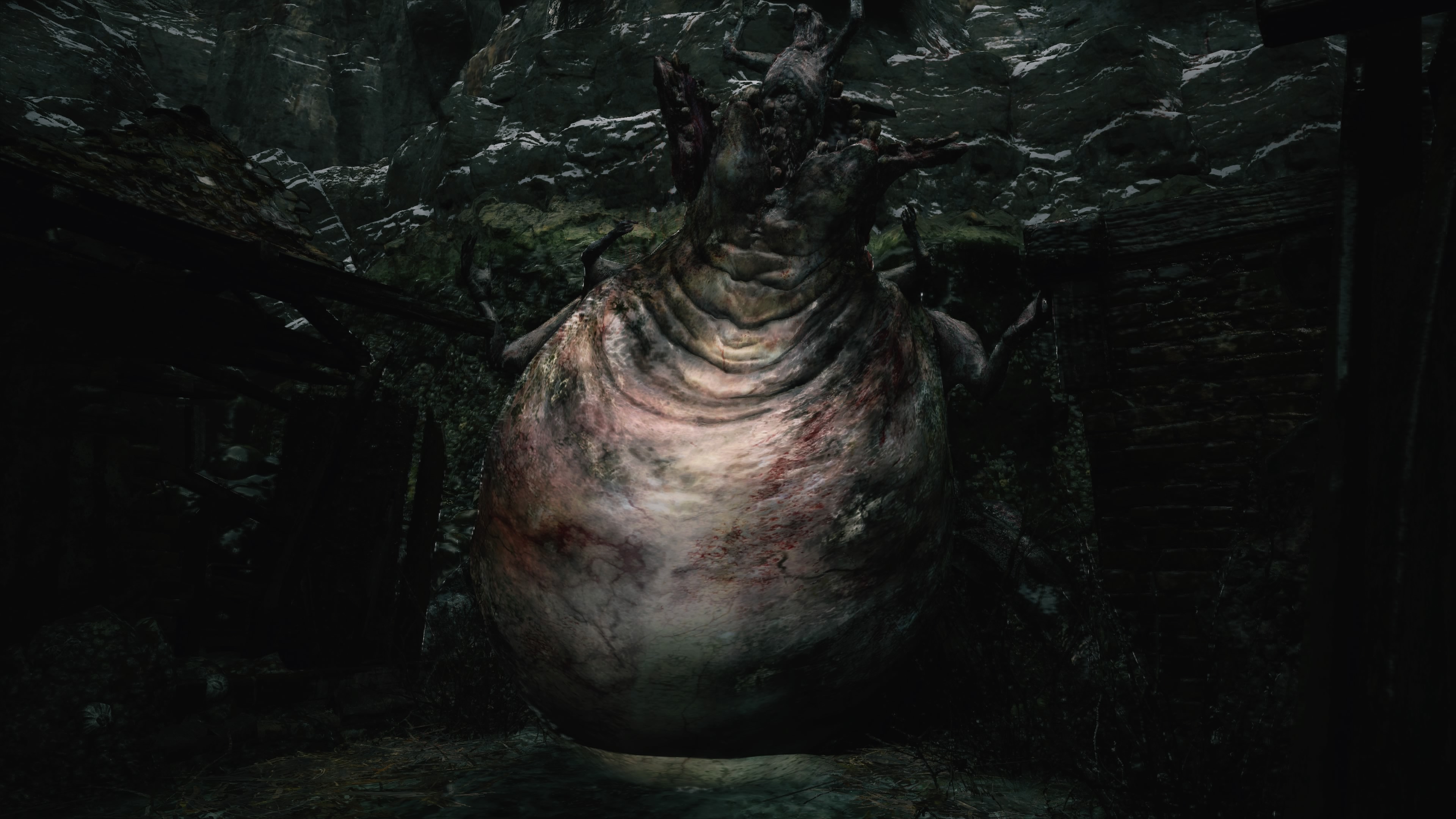
Taking these enemies down is easier than ever before, thanks to weapon upgrades and parts. While Ethan will pick up the basic versions of many weapons, including pistols, shotguns, a sniper rifle and a revolver, extra weapon parts can tackle pesky issues like weapon sway on a sniper rifle. In addition, the Duke can upgrade these weapons with upgrades improving aspects such as a weapon's power, rate of fire, reload speed and ammo capacity.
As Ethan's arsenal becomes more powerful, you need to worry about resource management, particularly inventory management. The good news is that Village has the best inventory management we’ve seen to date, allowing you to purchase more inventory space from the Duke, stack your items and move objects around to make more space. Basically, it's the same way Resident Evil 4 did it - and it's most welcome here.
What makes this management even simpler is that Treasures and Key Items are under a different tab, so you’re not trying to pack in your weapons, medi kits, key items and treasures all into one section.
Crafting is also easier than ever, with plenty of resources at your disposal. On PS5, you can simply hold ‘Triangle’ and select which item you wish to craft. The range of items to craft isn’t huge, but it doesn’t need to be - and you can purchase more crafting options from the Duke.
Utilizing hardware
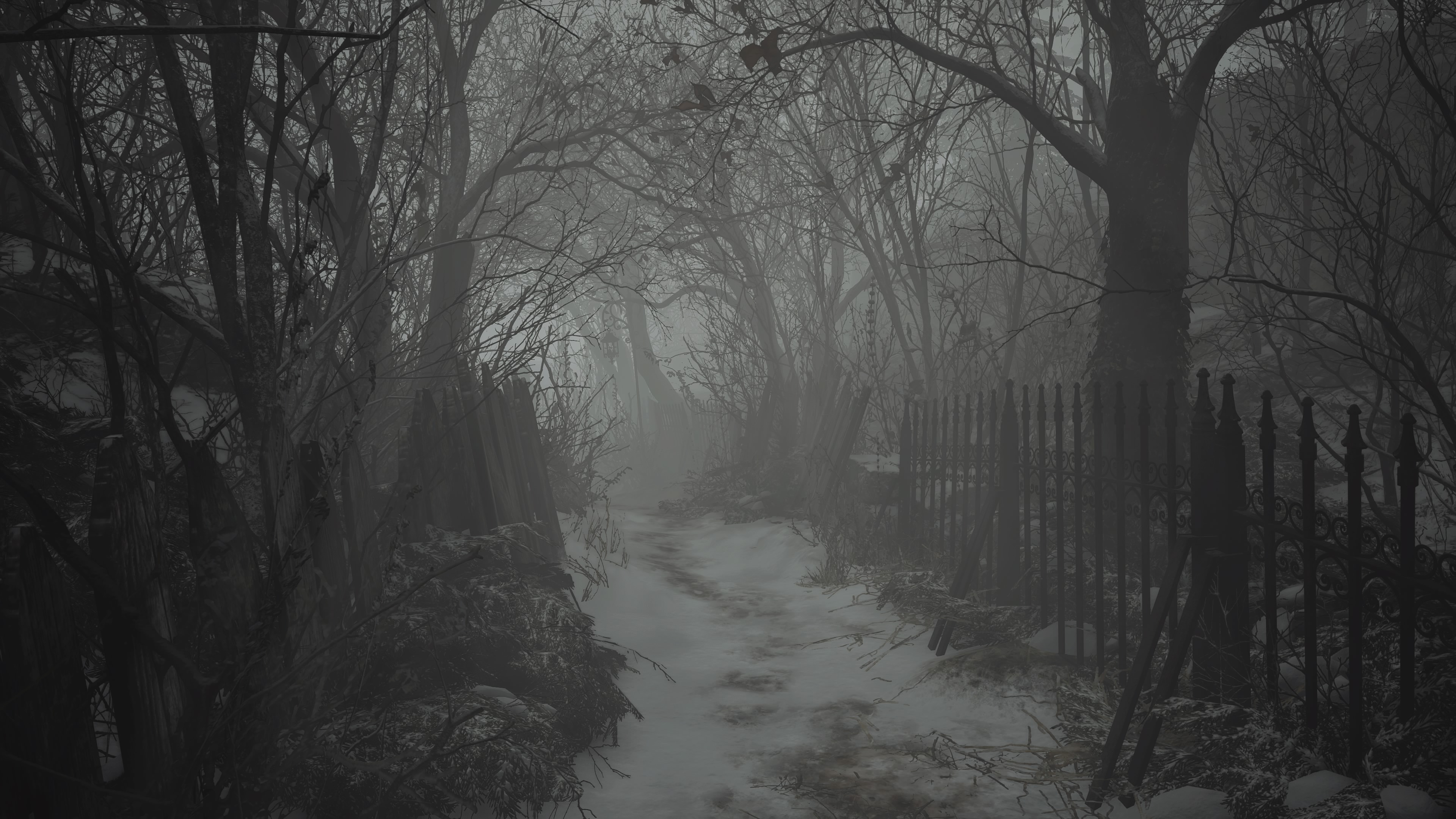
- PS5 3D audio adds to the horror
- Makes use of HDR and Ray Tracing on PS4 and Xbox Series X
- Seamless loading
The true star of Resident Evil’s horror is its audio. Resident Evil Village supports PS5 3D audio, which works with any headset as long as you’re playing on Sony’s latest console. Working like spatial audio, this allows you to hear sounds coming from the direction of their source as if you were actually in the game. It’s perfectly suited to a horror game such as Village, particularly in more claustrophobic buildings, as it allows you to hear every drip in a dungeon and each raspy breath of an adversary.
But it’s not all about what you do hear, sometimes it’s about what you don’t. We found that we became reliant on audio to indicate when an enemy was nearby, so on an occasion where Capcom purposely avoided an enemy making any sound at all - it took us by surprise, to say the least.
Our only gripe with the 3D audio is that the game doesn’t automatically register when you change between TV and headset audio, so you need to manually change your audio settings to get the most out of the sound.
While 3D audio is confined to PS5, both the PS5 and Xbox Series X versions of the game utilize ray tracing and HDR - though you need a TV that supports the latter. We found that, even without an HDR TV, Village looked stunning - so those without won’t miss out massively.
The next-gen load times are also a huge plus, with seamless transitions between gameplay and cutscenes meaning you are never ripped out of Resident Evil Village’s immersion.
More to do
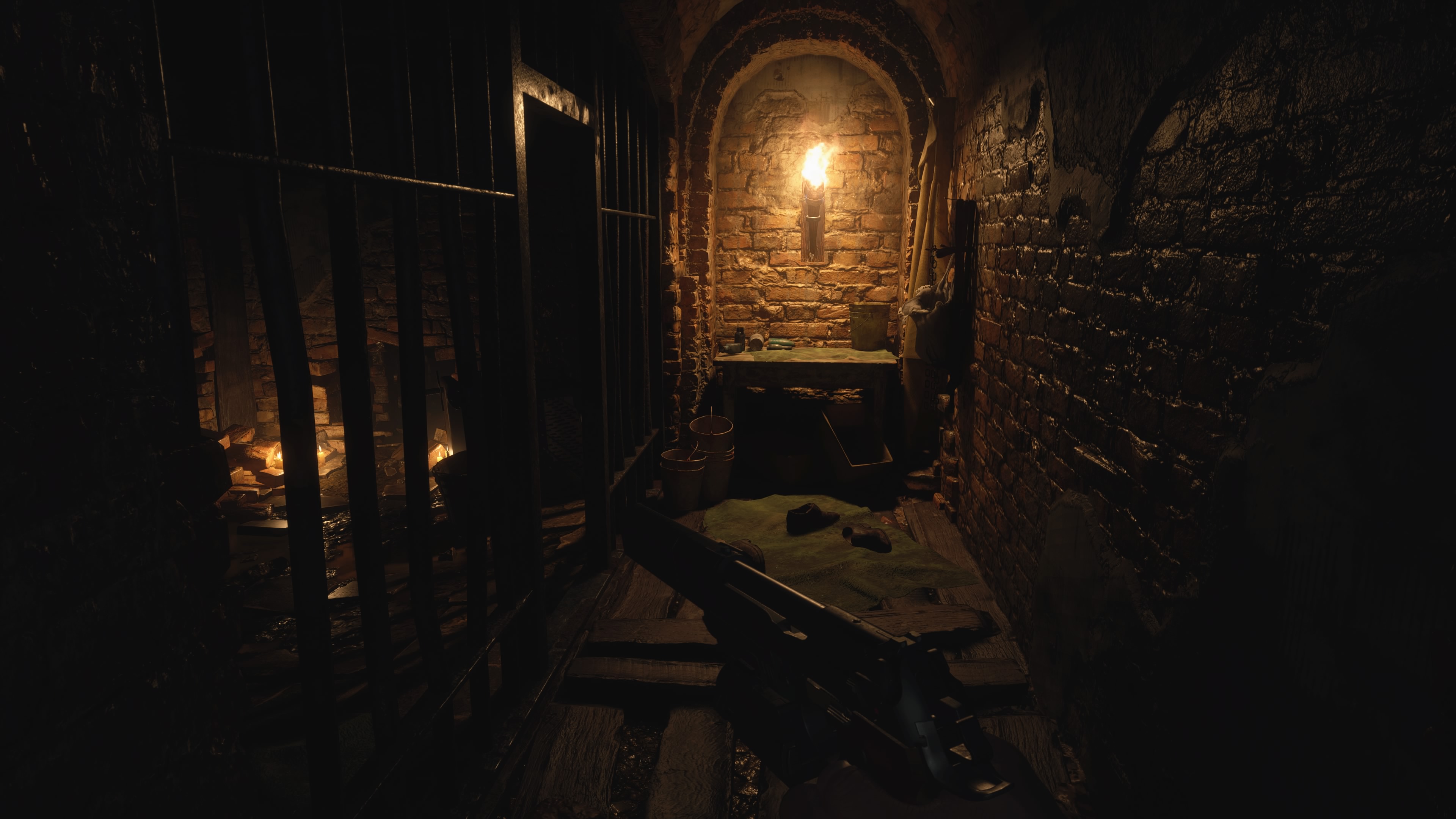
While Village’s 10-hour run-time may not seem particularly long - and we did take our time in exploring everything we could - it never felt like it outstayed its welcome. Village knows when it comes to a natural end, and thankfully doesn’t push any further.
Instead, its end opens more doors for you and encourages replayability. At the end of your first playthrough, you receive Challenge Points, much like Resident Evil 7, based on the set challenges that you have completed during that first playthrough. These Challenge Points allow you to buy new weapons that will make your next run easier and a bit different than the first - you might even want to ramp up the difficulty next time. You can also use these points to buy artwork and figurines, if you’re more of a collector, or to unlock the Mercenaries mode.
Mercenaries mode, first seen in Resident Evil 3: Nemesis, sees you attempting to reach as high a score as possible by simply gunning down enemies in fixed areas. The higher the score, the higher the grade, with higher grades allowing you to unlock new areas. Mercenaries is perfect for those who want a challenge or to simply gun down waves of enemies.
Also due to arrive at a later date is Re:Verse, which will be an online mode that comes free with Resident Evil Village. Initially due to launch alongside Village, Re:Verse has now been delayed until "Summer 2021”, so expect it to release sometime between June and August barring any further delays. We haven’t had any hands-on time with Re:Verse yet but will share our impressions when we have.
Verdict
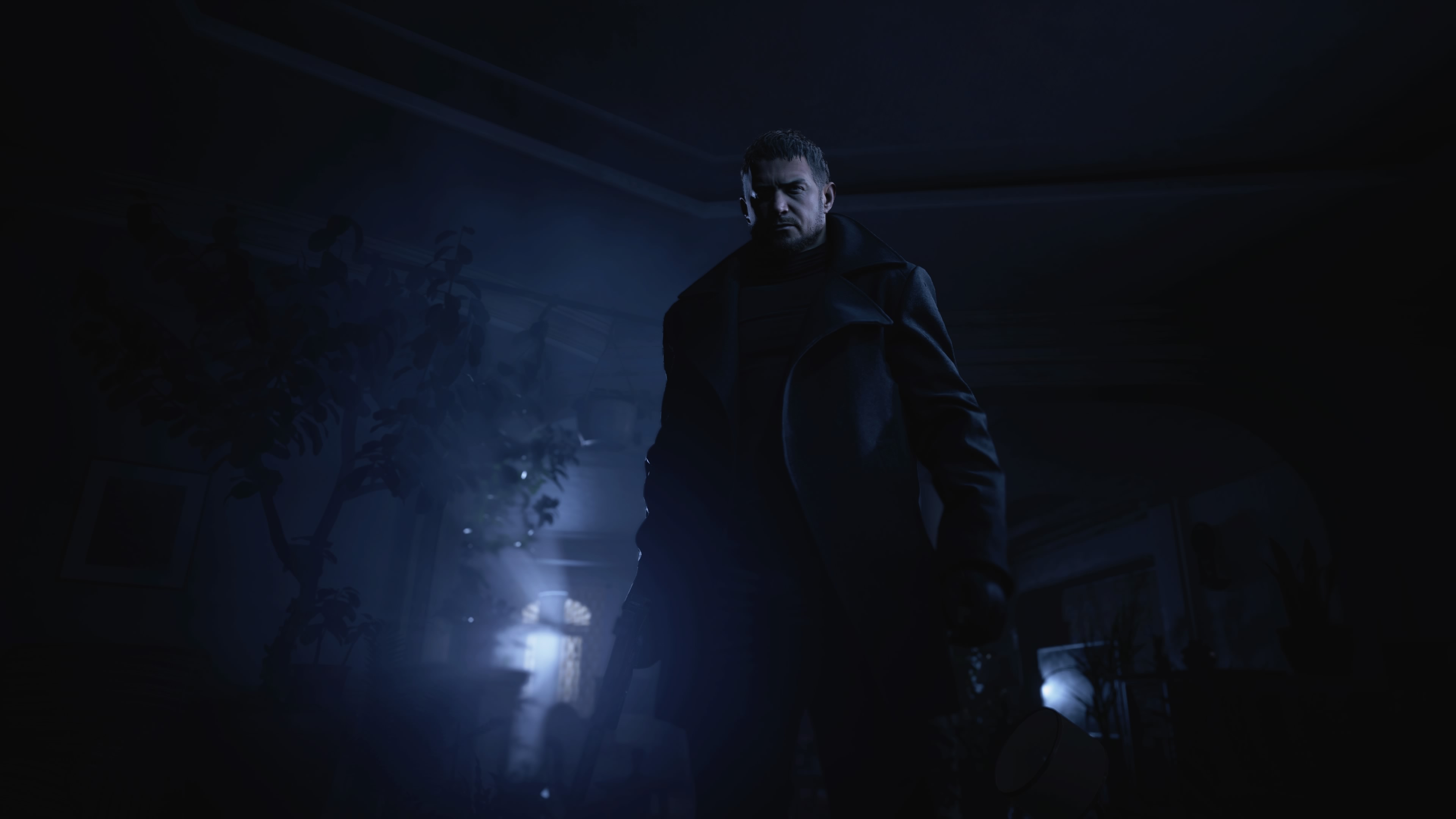
Resident Evil Village may have its faults, but it’s still one of the best Resident Evil games we’ve had the pleasure to play. While we’re disappointed in pacing issues towards the end of the game and we wish that the boss fights had more of a punch to them, the way Capcom threads together Village’s own story with the overall lore of the series is beautifully done. We applaud the risks the developer took in experimenting with such a veteran series.
- New PS5 games: upcoming PS5 game release dates
0 comments:
Post a Comment